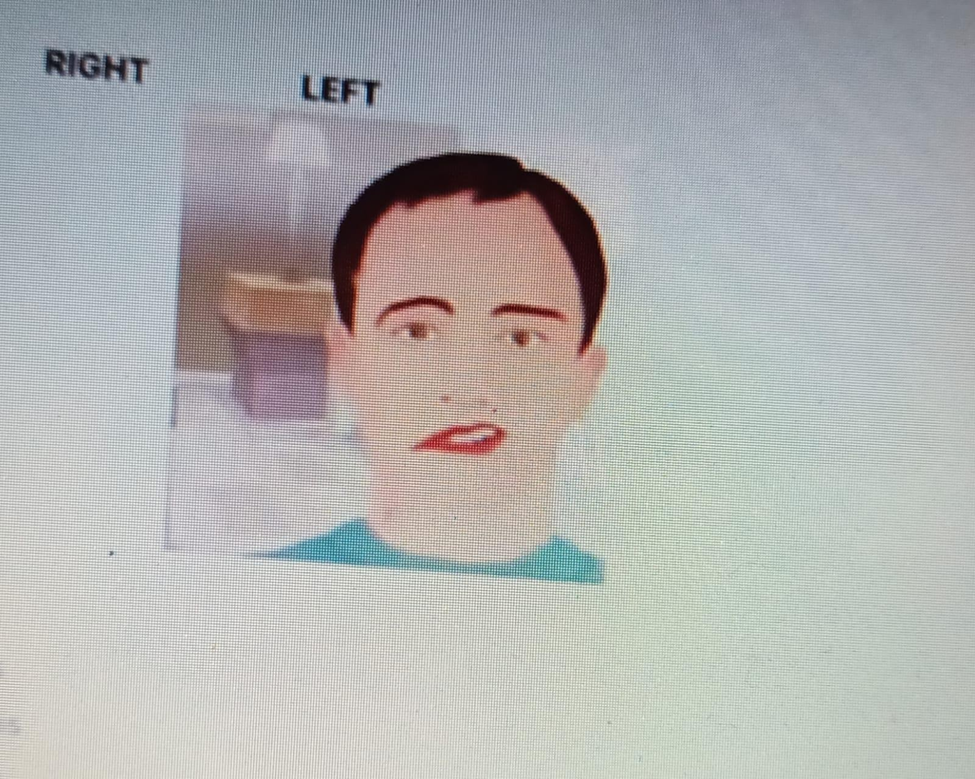The nurse exploring cranial nerves function and observes the following reaction: The nurse documents that the client has a:

Left VII cranial nerve paralysis
Right Vll cranial nerve paralysis
Right V cranial nerve paralysis
Left V cranial nerve paralysis
The Correct Answer is B
Choice A rationale: This is not accurate since the manifestations of facial nerve paralysis are observed on the contralateral side which in this case is the left side of the face hence the right facial nerve is paralyzed.
Choice B rationale: Facial nerve paralysis cause symptoms such as drooping of the eyelid, cheek or mouth as depicted in the above picture. The right facial nerve is paralyzed since the nerve innervates the contralateral side hence the effects are demonstrated on the
left side of the face.
Choice C rationale: trigeminal nerve paralysis causes symptoms such as weakness in muscles of mastication, altered sensation over the face and tongue, and hearing impairment and not the symptoms depicted above.
Choice D rationale: trigeminal nerve paralysis causes symptoms such as weakness in muscles of mastication, altered sensation over the face and tongue, and hearing impairment and not the symptoms depicted above.
Nursing Test Bank
Naxlex Comprehensive Predictor Exams
Related Questions
Correct Answer is A
Explanation
Choice A rationale: Considering the mechanism of injury, pain severity, tenderness, swelling, and ecchymosis, there is a high suspicion of a fracture. Immobilization is essential to prevent further injury and reduce pain.
Choice B rationale: Contracture is less likely in this acute injury scenario. Acetaminophen might manage pain, but it doesn't address the risk factor.
Choice C rationale: A sprain is less likely given the severity of pain and the mechanism of injury. Raising the leg doesn't address the risk of a suspected fracture.
Choice D rationale: Dislocation doesn't align with the reported symptoms. Applying heat could potentially worsen inflammation.
Correct Answer is A
Explanation
Choice A rationale: The signs and symptoms of urinary catheter obstruction include hematuria with clots, bladder spasms, and a feeling of urinary urgency. The nurse should increase the rate of the continuous bladder irrigation to flush out the clots and relieve the obstruction. The nurse should also monitor the client's vital signs, fluid balance, and pain level. The other options are not consistent with the client's presentation.
Choice B rationale: Shock would cause hypotension, tachycardia, and decreased urine output.
Choice C rationale: Hyponatremia would cause confusion, weakness, and seizures.
Choice D rationale: Urinary tract infection would cause fever, chills, and foul-smelling urine.
Whether you are a student looking to ace your exams or a practicing nurse seeking to enhance your expertise , our nursing education contents will empower you with the confidence and competence to make a difference in the lives of patients and become a respected leader in the healthcare field.
Visit Naxlex, invest in your future and unlock endless possibilities with our unparalleled nursing education contents today
Report Wrong Answer on the Current Question
Do you disagree with the answer? If yes, what is your expected answer? Explain.
Kindly be descriptive with the issue you are facing.
